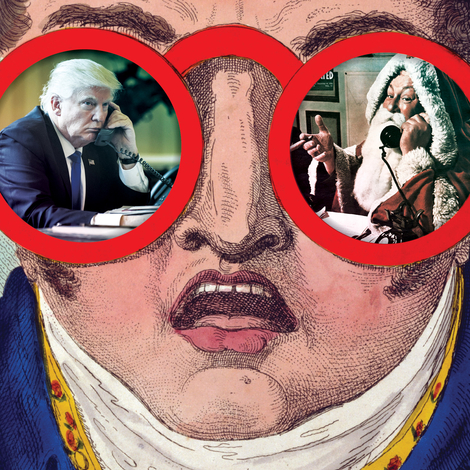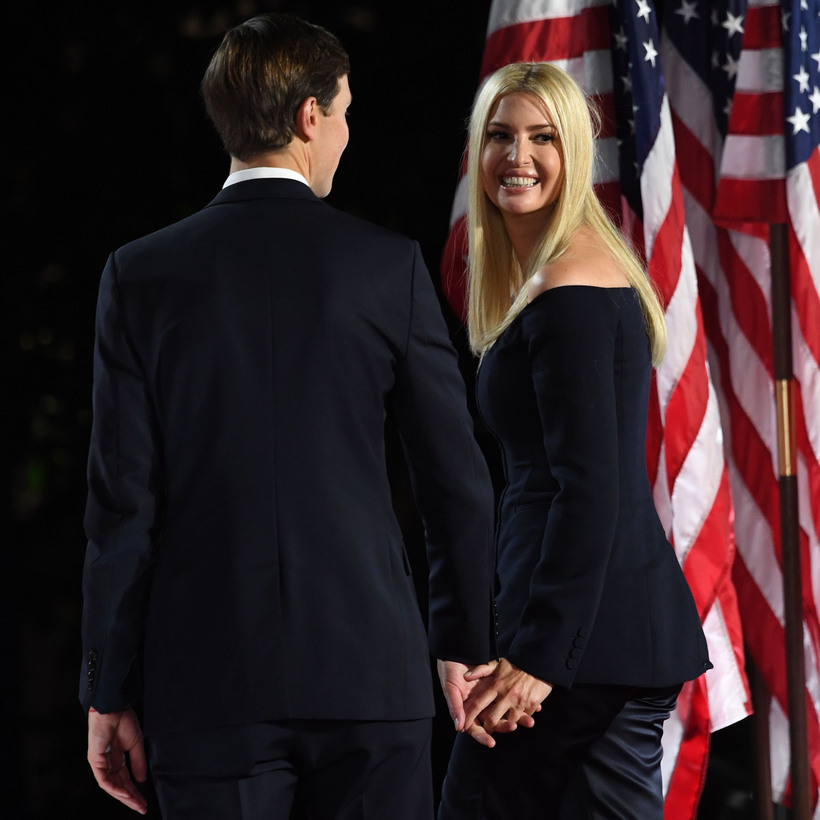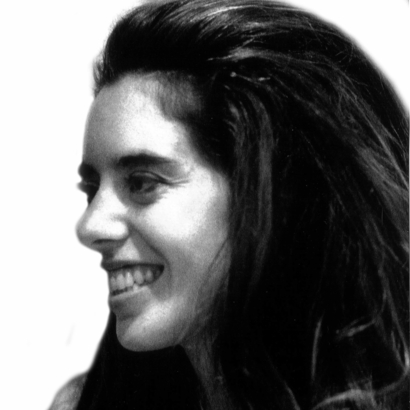After the coronavirus vaccine rolls out, parties are expected to return with a roar rivaling that of the gleeful 20s a hundred years past. But when Ivanka Trump and Jared Kushner return to civilian life, civility may not greet them. Will Ivanka even dip her toe into the sharky waters of high society that she left four long years ago?
Insiders know better: Ivanka Trump never cannonballed into high society in the first place.
A Symbol of Gauche American Wealth
“Sure, she was a boldface name,” explains photographer Patrick McMullan, who has captured the gilded game in New York through the decades. “Ivanka wasn’t much pals with anyone in society; in fact, you didn’t even see her as a guest that often. Only with her jewelry business, for a short period, did she start coming out a bit more. Others had money to blow on gala tables, or their fathers were buying tickets for them. But she wasn’t doing any of that.”
When Ivanka was born, in 1981, her parents were plastered on the pages of the tabloids. With their garish, gold-plated lifestyle, Donald and Ivana were never considered stylish. Greed guided every move they made and every word they spoke. As his daughter came of age, in the early aughts, Donald Trump saw his role on The Apprentice establish him as a symbol of gauche American wealth.
The entry points to the upper crust have shifted mightily, but the Trump-family name had never been anywhere near society’s century-old foundation: philanthropy. Unlike Robert and Blaine Trump, who championed their causes like racehorse owners, Donald Trump had a narrow, transactional view of the upper class: it could provide business partners in his golf-course ventures, and club members for Mar-a-Lago.
When the century turned over, Ivanka graduated from Choate Rosemary Hall and headed off to Georgetown, which she attended for two years before transferring to her father’s alma mater, the University of Pennsylvania. When she came home to New York in her early 20s, she joined the Trump Organization before launching a fine-jewelry collection. She flitted around town, showing up here and there, which helped promote her stature, and also her brand.

It was the era of the “socialite,” personified by the naked drive of Tinsley Mortimer and the more understated elegance of Lauren Santo Domingo. Ivanka meddled a bit in this social scene, but she may have found certain doors tough to jiggle open. She was attending parties and galas that were chronicled breathlessly on Web sites such as the now defunct Socialite Rank, in glossy rags such as Avenue and Gotham, and, most importantly, in the party pages of Vogue.
The Trump-family name had never been anywhere near society’s century-old foundation: philanthropy.
“I found her extraordinarily intelligent, and she whizzed through appearances with so much ease and grace, like water just falling off the feathers of a duck,” explains André Leon Talley, a former Vogue editor, who styled Melania Trump for her 2005 cover and was a guest at the Javanka nuptials. “But, for me, you cannot be an icon of that high-society, glamorous world unless you give something back, and there is little evidence of that. For the New York City Ballet, you had Anne Bass, Mercedes Bass with the Metropolitan Opera, Pat Buckley, who chaired the Metropolitan Museum ball. Ivanka never did anything to establish herself as something to give back or chair. What is her cause? There is no cause!”
The American tradition of philanthropy to support people, organizations, and institutions is unique (or, at least, uniquely tax-deductible) in the world. And those donors were not all fame-hungry, craven social beasts; many of them were having a ton of fun. (Patrick McMullan remembers that no one laughed harder or stayed later than Nan Kempner and Kenny Lane.) On those evenings, the crowd comprised a cross section of New Yorkers; those who could dress well and amuse properly were given slack and had enormous social capital.
Codes and Clubs
In the early aughts, society’s various elements were splintering further into factions: there were the nobodies, who invented themselves with the help of designers and society blogs that ranked them on the quality of their outfits and events, and the intercontinental jet set, with their axis of Gstaad disco clubs in winter, yachts circling the Italian island of Panarea in the dreamy summer, and, in the autumn, shooting parties in the Cotswolds (complete with black-tie dinners and naughty late-night parlor games). It became more difficult to even define high society, but a sliver of old-fashioned types from the sands of Hobe Sound to the rocky cliffs of Seal Harbor remained stalwart in the face of the brewing social-media onslaught. You’ll still find them sipping their Southsides and wearing needlepoint belts that play off the piping of their Belgian loafers at country (and city) clubs near and far.
“Not long before this time, women would buy a dress, and if they were photographed in it, they had to burn it. Suddenly, you could rent a dress for the night at Rent the Runway or buy a used one at the RealReal. The formality was gone, along with the strict codes of behavior and dress,” explains Stephanie Winston Wolkoff, author of the No. 1 best-seller Melania and Me: The Rise and Fall of My Friendship with the First Lady. One woman who watched Ivanka maneuver about town insists that she did have social aspirations, but they were always tied up in the desire for fame, notoriety, and external validation.

Ivanka may have known how to hold a fork, but contemporaries contend that much about her look and style were just “off” in these years: her clothes too tight, her makeup too heavy. No doubt Fifth Avenue types also found her father’s coarse style and his Atlantic City–born bromance with Don King a bit much to swallow with their deviled eggs.
And, as irony would have it, and because one can never make this stuff up, Ivanka started dating a wealthy man whose family invented the cash register. James “Bingo” Gubelmann was a Palm Beach and Newport fixture who held immense social sway in part because his mother, Kate, was and is a leader of the snootiest-of-the-snooty Everglades Club, in Palm Beach. (To this day, when greeted by name, he responds with “Bingo!”) But as one real-estate agent in the front row of New York power put it, “Socializing to be part of the set was not on her agenda. If she did do anything, it was carefully placed power moves.”
No doubt Fifth Avenue types found her father’s coarse style and his Atlantic City–born bromance with Don King a bit much to swallow with their deviled eggs.
“Forget about Stepford wives; Donald taught Ivanka never to show any emotion that could ever be construed as detrimental. As soon as she stepped out, she radiated elegance and composure, and you never saw shoulders slumped at any event ever,” Wolkoff points out. She not only opened her jewelry store on Madison Avenue; she also played her supporting-actress role on The Apprentice. “She didn’t need society; she had a prime-time show. Ivanka is Donald, just in a different suit.”
Enter Jared Kushner, a cog in his family’s real-estate empire who was reportedly introduced to Ivanka by Wendi Deng, who was then married to Rupert Murdoch. He came from New Jersey, and while he didn’t seem interested in courting Manhattan’s beau monde, he cared enough about impressing the city’s movers and shakers to become, in 2006, the owner of The New York Observer. Ivanka gravitated more into his orbit, hanging around with Tico Mugrabi and Maggie and Reed Cordish. (The Cordishes would eventually take roles in the administration.)
In January, moving vans will roll into the posh Kalorama neighborhood of Washington to usher the Kushners into their next era. Ivanka may very well be unwelcome in a city that never fully embraced her and whose rules she never thoroughly followed. A return to their lower Park Avenue apartment in Manhattan, where 84.5 percent of voters chose Biden, and where the Lincoln Project took out an anti-Javanka billboard in Times Square, will not likely provide a soft and viable landing.
This is the main reason (of many) the couple has chosen the income-tax-free state of Florida as their new principal residence. “She is wisely pre-empting a strike with this self-imposed gilded exile in Palm Beach,” notes Leon Talley. “Why come back to New York after being in Washington? What can she do except go to the gym, and slide in and out of S.U.V.’s for appointments? She’s not going to walk in Central Park, and it’s best if she feels more comfortable in her billionaire’s bunker down there.”
The Trump-Kushner purchase of a $30 million plot of land on Indian Creek Island in Miami ensures that the family can insulate themselves with other like-minded New York magnates for whom civic duty is an afterthought. With the clinking of their Cristal, they can celebrate how they’ve avoided income taxes: revenues that would otherwise go to the spectacular and struggling New York City that created their fortunes in the first place.
Holly Peterson is a journalist and the author of several novels, most recently It’s Hot in the Hamptons


